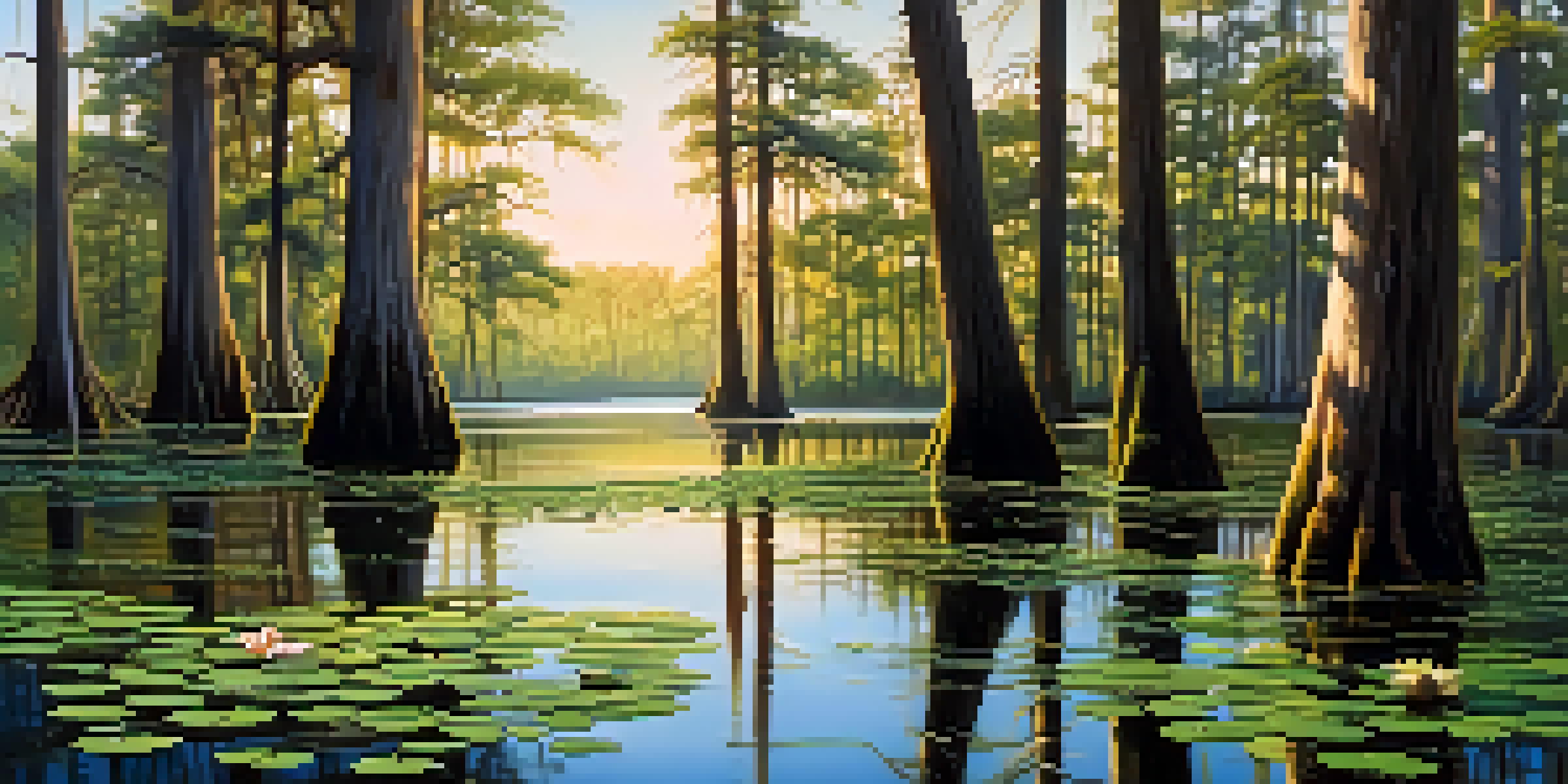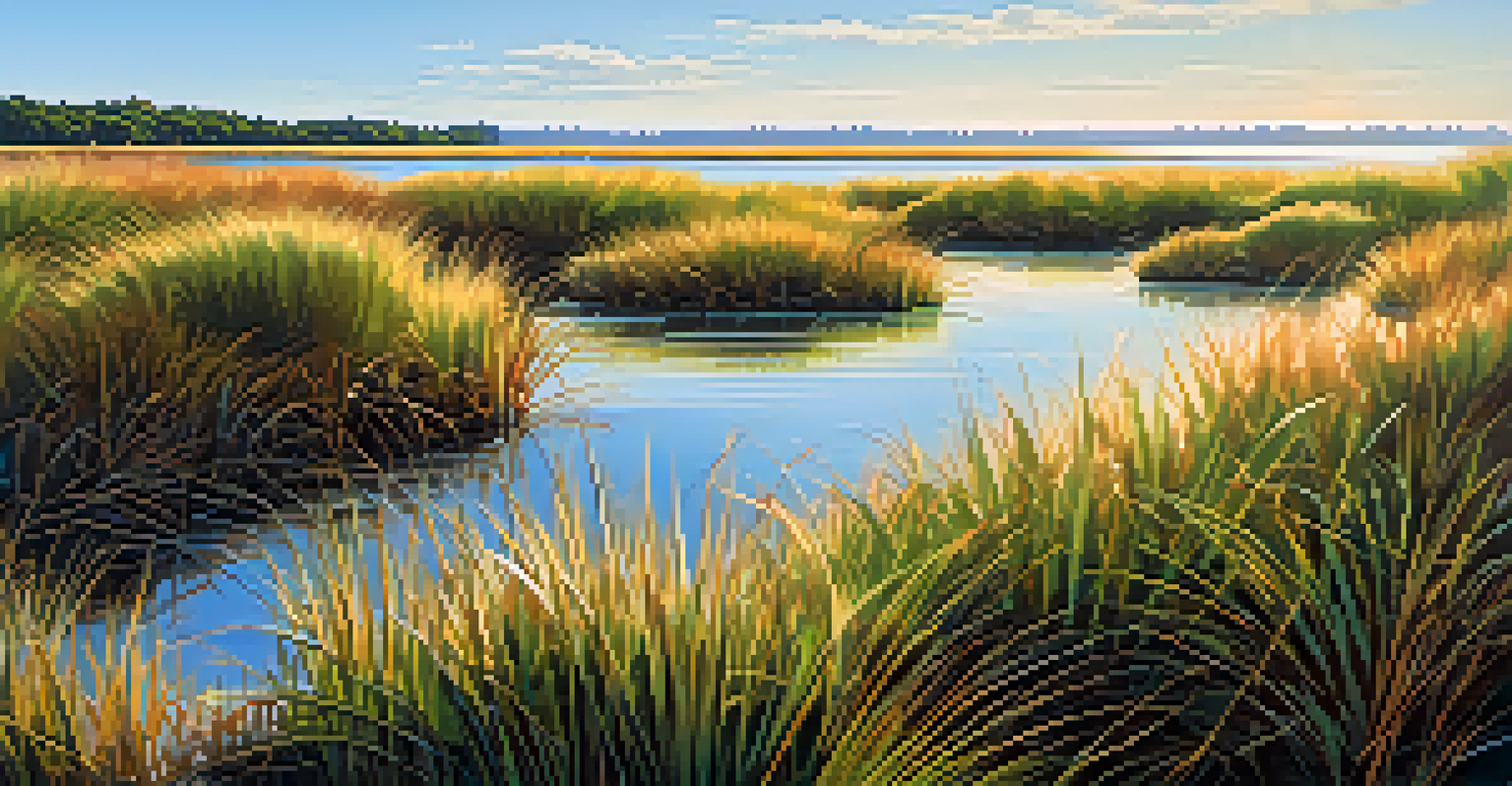Unique Flora of Louisiana's Ecosystems: Adaptations and Traits

Introduction to Louisiana's Rich Ecosystems
Louisiana boasts a rich tapestry of ecosystems, from lush wetlands to dense forests. This biodiversity provides a unique habitat for a variety of plant species, each adapted to thrive in their specific environment. Understanding these ecosystems is key to appreciating the unique flora that call Louisiana home. Let's dive into the distinctive adaptations and traits these plants exhibit.
Swamp Plants: Masters of Waterlogged Conditions
Swamps in Louisiana are teeming with life, and the plants here have adapted remarkably to their waterlogged surroundings. Species like cypress trees and water lilies have developed specialized root systems that allow them to thrive in saturated soil. These adaptations not only help them survive but also play a crucial role in maintaining the ecosystem's health.
Louisiana's Diverse Ecosystems
Louisiana is home to a variety of ecosystems, each with unique plant species adapted to their specific environments.

For instance, the cypress tree's 'knees' protrude from the water, providing stability and allowing for gas exchange. These adaptations illustrate how plants can evolve to conquer challenging environments, showcasing nature's resilience.
Coastal Marshes: Resilience Against Salinity
Coastal marshes are another vital ecosystem in Louisiana, where plants face the challenge of salinity from seawater. Species such as cordgrass have adapted to tolerate salt, making them essential for maintaining the marsh's ecological balance. These plants not only provide habitat for wildlife but also protect shorelines from erosion.
The clearest way into the Universe is through a forest wilderness.
Their ability to filter pollutants and stabilize sediments highlights the importance of these plants in combating environmental challenges. The unique adaptations of coastal marsh flora exemplify nature's ingenuity in the face of adversity.
Upland Forests: Adapting to Varied Soil Types
Beyond wetlands, Louisiana's upland forests showcase a different set of adaptations. Trees like oak and hickory have deep root systems that allow them to access nutrients from a variety of soil types. This adaptability helps them thrive in diverse conditions, from sandy to clay-rich soils.
Adaptations for Survival
Many plants, such as cypress trees and coastal cordgrass, have developed specialized adaptations to thrive in challenging conditions like waterlogged soil and salinity.
Moreover, these trees play a significant role in preventing soil erosion and maintaining biodiversity in their ecosystems. Their robust nature is a testament to the resilience of flora in the face of environmental variations.
Unique Species: The Louisiana Iris
One of Louisiana's most iconic plants is the Louisiana iris, known for its stunning blooms and adaptability. This flower thrives in moist areas and has developed features that allow it to flourish in both freshwater and brackish environments. Its vibrant colors not only attract pollinators but also enhance the visual appeal of Louisiana's wetlands.
The Louisiana iris serves as a perfect example of how plants can adapt to their surroundings while contributing to the ecosystem's beauty and diversity. Its resilience highlights the importance of preserving these unique species for future generations.
Carnivorous Plants: Nature's Unique Survivors
Louisiana is home to fascinating carnivorous plants like the Venus flytrap and sundew, which have evolved to thrive in nutrient-poor soils. These plants have developed unique mechanisms to trap and digest insects, allowing them to supplement their nutrient intake. This adaptation is particularly valuable in environments where traditional sources of nourishment are scarce.
Conservation is Crucial
Ongoing conservation efforts are vital to protect Louisiana's unique flora from threats like habitat loss and climate change.
Their quirky nature captures the imagination, showcasing a different side of plant survival. The presence of these carnivorous plants adds an intriguing layer to Louisiana's diverse flora.
The Role of Fire in Ecosystem Adaptations
Fire plays a surprisingly beneficial role in many of Louisiana's ecosystems, particularly in longleaf pine forests. Certain plants have adapted to fire through thick bark or the ability to resprout quickly after a blaze. This adaptation is crucial for maintaining ecological balance and promoting new growth.
The cyclical nature of fire in these environments helps control underbrush and allows light to reach the forest floor. Understanding the role of fire highlights how adaptations can be shaped by environmental factors.
Conservation Efforts: Protecting Louisiana's Unique Flora
As we explore the unique flora of Louisiana, it's essential to recognize the ongoing conservation efforts aimed at protecting these ecosystems. Habitat loss and climate change pose significant threats to many plant species, making preservation a priority. Organizations and communities are working together to restore habitats and promote sustainable practices.
By raising awareness and supporting conservation initiatives, we can help ensure that Louisiana's unique plant life continues to thrive for generations to come. Every effort counts in safeguarding the rich biodiversity that defines this remarkable state.